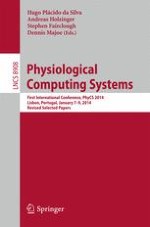2014 | OriginalPaper | Chapter
Multiresolution Feature Extraction During Psychophysiological Inference: Addressing Signals Asynchronicity
Authors : François Courtemanche, Aude Dufresne, Élise L. LeMoyne
Published in: Physiological Computing Systems
Publisher: Springer Berlin Heidelberg
Activate our intelligent search to find suitable subject content or patents.
Select sections of text to find matching patents with Artificial Intelligence. powered by
Select sections of text to find additional relevant content using AI-assisted search. powered by
